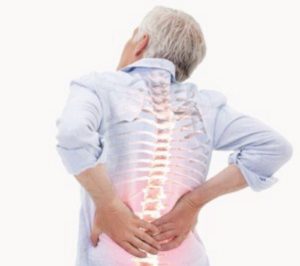 Both integrated pain management and interventional pain management are treatment styles designed to help people relieve chronic and acute pain and discomfort.
Both integrated pain management and interventional pain management are treatment styles designed to help people relieve chronic and acute pain and discomfort.
According to the American Academy of Pain Medicine, more than 100 million Americans suffer from chronic pain – nearly four times the number of people who have diabetes and more than five times the number of people who suffer from coronary heart disease.
Chronic pain is a problem of epidemic proportions.
Though they may look healthy on the outside, people who suffer from chronic pain often exert herculean efforts to get out of a chair, ride in a car, or sit at a table. For many people, the source of their pain remains a mystery, so they work with pain management specialists to manage the symptoms and achieve a level of normalcy and function in their lives.
We know pain is a healthy and natural response of our nervous system to keep us safe and sound. Hitting a finger with a hammer or twisting an ankle prompts the nerves near the injury to send electronic signals about the wound through the nerve cells and spinal cord to the brain stem (medulla) and thalamus. Once the signal arrives in the brain, it is distributed to the brain’s somatosensory cortex.
While we know how these signals reach the brain, scientists still don’t understand why some pain messages continue long after a physical injury heals. Fibromyalgia is an example of this. While an acute injury causes the initial pain reaction, the pain of fibromyalgia remains. The pain is real; though the cause is not readily apparent.
All pain results from inflammation or the inflammatory response.
While the source of chronic pain remains elusive, pain management specialists can use an arsenal of treatments and techniques to intervene and intercept the messages of the nervous system before they create cascading and debilitating sensations.
Pain management methods fall into two major categories: interventional and integrative pain management.
Integrative pain management is a treatment approach that uses many types of complementary and alternative medicine such as laser technology, acupuncture, massage, herbal medicine, behavioral and physical therapy, and patient education to address and resolve pain.
Since many of these integrative pain therapies are not backed by statistically significant clinical trial results, many insurance companies do not cover the procedures. The out-of-pocket costs make the treatments unattainable for many people.
Interventional pain management is a more traditional and proven medical treatment approach. Medical physicians use minimally invasive medical procedures to interrupt the nervous system’s transmission of the pain-filled messages from the nerve endings to the brain. In the case of chronic or severe pain, interventional pain management seeks to disrupt the pain cycle.
Bone & Joint employs medical doctors who are board-certified and fellowship-trained in physiatry and pain management procedures. These pain management specialists are medical physicians dedicated to finding unique solutions for their patients. They use scientifically proven techniques and treatments to block or treat pain caused by:
• Arthritis
• Cervical Disorders
• Neck and Back Disorders
• Headaches and Migraines
• Myofascial Pain Syndrome
• Low-back Pain
• Lumbar Disorders
• Peripheral Nerve and Joint Disorders
• Spasticity
• Pinched Nerves
• Sciatica
• Spasmodic Torticollis
• Sacroiliac Joint Pain
• Spinal Disc Ruptures
Pain management physicians have access to a number of diagnostic tools and treatments to identify and treat pain. Some common tools include:
Electrodiagnostic testing (EMG), which uses electrical impulses to measure the health of nerves and muscles. If a person experiences pain, tingling, numbness, pain, or weakness in the arms or legs, his or her pain management physician may order an EMG.
Fluoroscopically guided spinal injections use real-time X-rays that allow physicians to pinpoint pain relief treatments near the spinal column. Epidural steroid injections, facet joint injections, and nerve root blocks are a few types of fluoroscopically guided spinal injections.
Spinal cord stimulation places a stimulator under the skin near the spinal cord. The physician and the patient to work together to adjust the level of stimulation and control the pain. This minimally invasive technique is reversible, has few side effects, and provides adjustable and targeted pain relief without the use of opioids or other narcotic medications.
Trigger-point injections use acupuncture-style needles to release muscular knots and alleviate pain.
Image-guided or ultrasound-guided injections allow the pain medicine specialist to identify the source of the inflammation and target the injection for the best results.
Botox injections may relieve pain associated with headaches, myofascial pain, chronic pain syndrome, pelvic pain, arthralgia, and neuralgias.
When should I visit a pain management specialist?
If you experience any of the following indicators, you may want to call a pain management specialist to find relief.
1) You have experienced pain for 3 months or longer.
2) You have severe pain that limits your activities and movement.
3) You haven’t been able to relieve your pain with over-the-counter medications, natural therapies, or at-home treatments.
4) Your primary care provider cannot find the cause
of your pain.
5) You miss events because of pain.
6) You’ve worked with an integrative pain management practitioner but still, experience pain.
Associates Medicine & Surgery
239-433-7450 | www.aimsfl.com
Sources:
http://www.painmed.org/patientcenter/facts_on_pain.aspx#incidence
https://www.ncbi.nlm.nih.gov/pmc/articles/PMC2771434/








